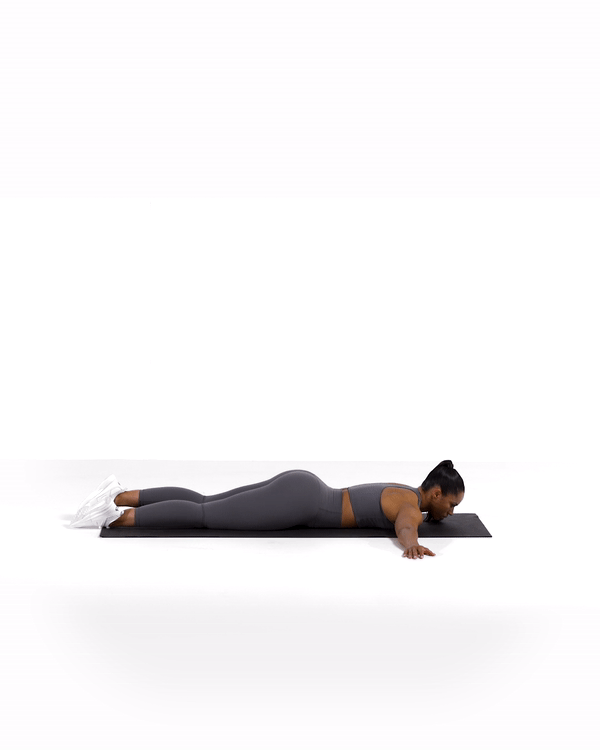 STRETCH YOUR WAY TO A STRONGER YOU
STRETCH YOUR WAY TO A STRONGER YOUYou’re not a lifter just when you’re lifting. If you’re really wanting to take your training to the next level, you’ll want to spend time working on all elements of the fitness lifestyle, not just heavy weights. Sure, nutrition, recovery & flexibility don’t offer the same rush as slapping a few plates on the bar and grinding our reps, but they’re still vital parts of making sure you perform at your best and make progress.
As part of our RYDERWORLD Black Friday Festival, we’re bringing you two weeks of all things fitness & lifting to help you live your best life. Flexiland is one of our side acts, creating to bring you the best of stretching and muscle flexibility. We’ve answered all of your questions while also bringing you a stretching routine just for lifters, to help you become your strongest self in the gym wear and leggings and improve your athletic performance.
So what is stretching good for?
Regular muscle stretching will improve your range of motion which can help with injury prevention, while enhancing your posture and increasing range of motion. A greater range of motion can allow you to lift without joint pain, loosen tight muscles while possibly correcting any muscle imbalances which can often lead to more injuries during your intense workouts. Active stretching can also help relieve DOMS (delayed onset muscle soreness) after a tough gym session. There’s a range of different styles of stretching techniques, but the two used most often are static and dynamic stretching. Static stretching involves stretching an individual muscle or muscle groups into position and then holding for a set time. Dynamic stretches involves performing sport-specific movements using only the muscle actions and range of motion specific to whatever physical activity you’re about to do, but at a lower intensity or lighter load.
Static stretching versus dynamic stretching
Some swear by static stretches, others won’t workout unless they’ve gone through a series of hip rotators & lateral lunges, some don’t stretch at all (we don’t recommend this). Ultimately it’s not about one being better than the other, but rather what context they’re used in. Static stretching exercises are best used as part of your lifting lifestyle, with the chronic benefits gained by practicing a regular stretching program both in and outside of the gym. See your flexibility as something to be trained in the same way you’d work on your deadlift strength or other major muscle groups. While some research shows that static stretching before training can have a negative effect on your performance, this can easily be solved with a minimum 15 minutes rest prior to physical activity. This is the time to use dynamic stretching to bring heat to cold muscles and take your joints through a full range of motion to prepare to level up your lifting.
Yoga & Stretching Mobility Routine for Beginners
We’ve teamed up with Maya Basse & Grace Teale to bring you mobility & yoga routines that anyone can benefit from, whether you’re a trained yogi or have trouble touching your toes. Time to alleviate that muscle tightness in your hip flexors, upper back and hamstrings.
YOGA FLOW WITH GRACE TEALE
MOBILITY WITH MAYA BASSE
Leg Swings [8 reps each side]
Set up near something stable you can use for balance and support. Stand side on and as close as possible. This is your starting position.

Exercise Steps
1. Keeping your leg straight, extend it up and out in front of you.
2. Lower it back down and use momentum so swing it back behind you.
3. Complete for reps or time before completing on the other leg.
Tips
- Try to keep your hips level and avoid arching / rounding your lower back throughout the movement. Aim to keep your pelvis stable.
- Start slow and build up to higher velocities.
- You should feel some stretching through the front and back of your thighs as you swing through backwards and forwards respectively.
Scorpions [16 reps]
Start by laying on a mat (optional) on your stomach. Have your arms extended out laterally to your sides. This is your starting position.

Exercise Steps
1. Lift one leg off the ground and bring it up and around behind your other leg to try and touch the ground on the other side.
2. Return to the start position in a controlled manner.
3. Complete on the other side, alternating through for reps or time.
Tips
- Try to keep both shoulders on the ground at all times.
- If you can't touch the ground with your toes, that's fine! Just do your best and over time your range will increase.
Arm Circles [15 reps]
Stand up tall with your arms raised out to your sides level with your shoulders. This is your starting position.

Exercise Steps
1. Slowly move your arms in a circular direction forwards.
2. Keep repeating this circular motion slowly making the circles bigger over time.
3. Repeat for reps of time.
Tips
- Keep your movements smooth
- By the end of the exercise you should be completing full range circular motions with both arms.
Thoracic Extensions
Lie down on a mat (optional) on your stomach with both legs out straight. Bring your hands up above your head with your palms facing down. This is your starting position.

Exercise Steps
1. Pull your shoulder blades back and lift your shoulders off the ground. 2. Hold in this position for the duration required.
Tips
- Focus on squeezing your shoulder blades together.
- Don't forget to breathe during the exercise.
Ryderwear HQ is your lifters library of the latest training, nutrition & mindfulness insights (as well as everything you need to know about Black Friday).
Read More: Ryderwear HQ | Ryderwear





